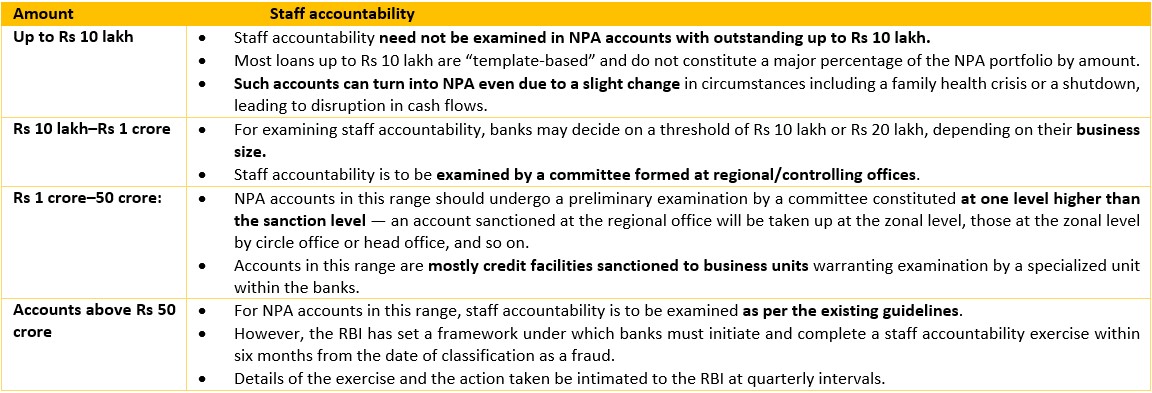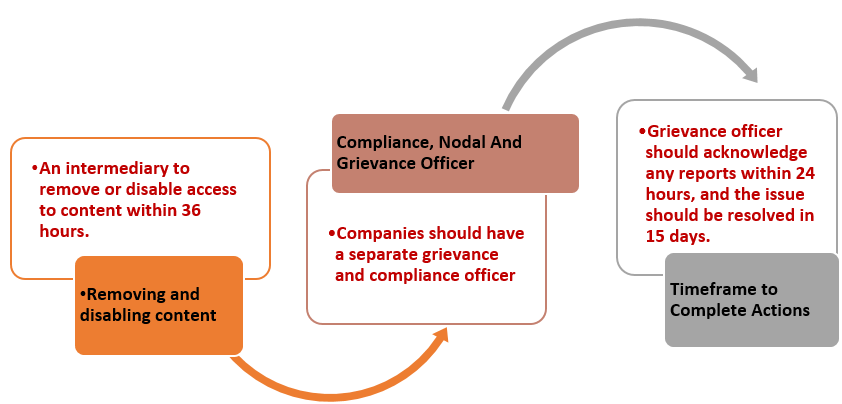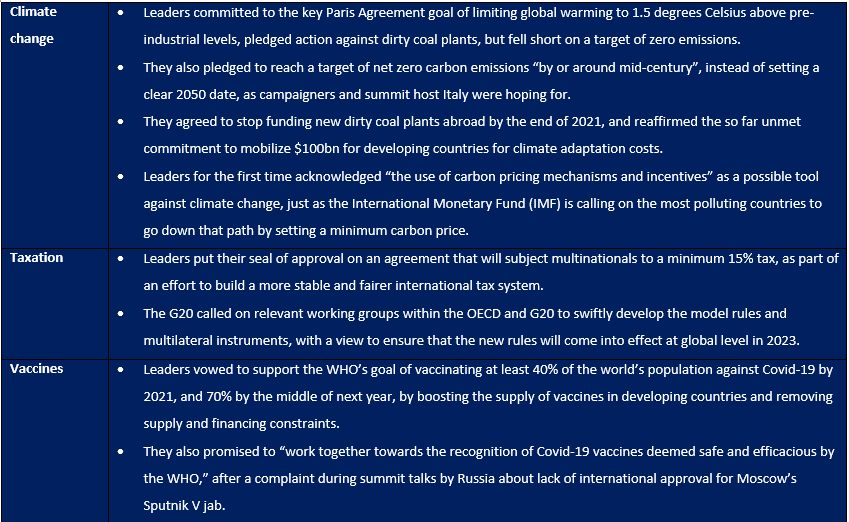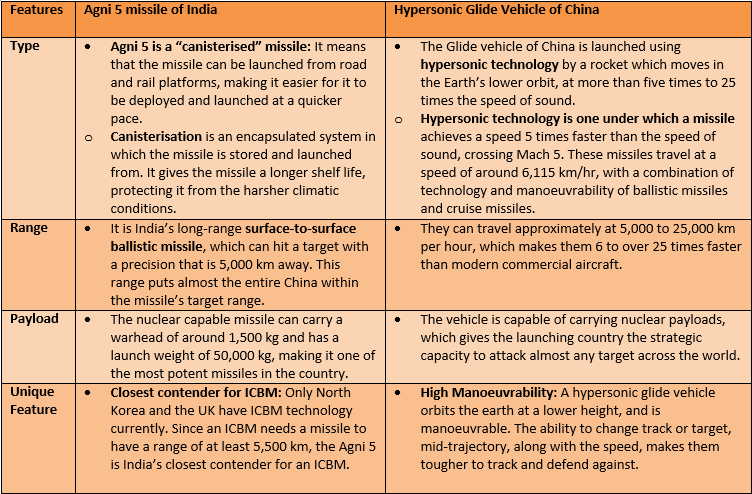Monday, 8th November 2021
5 years of Demonetisation
News
8th November, 2021 marks the 5th anniversary of demonetisation in the year 2016.
About the News
- On November 8, 2016, the Prime Minister of India had announced ‘demonetisation’ to weed out black money from the country. The move, which saw the currency notes of Rs 500 and Rs 1,000 denominations getting banned, wiped out 86% of India’s currency overnight.
- The currency with the public, which stood at Rs 17.97 trillion at the time, declined sharply to Rs 7.8 trillion in January 2017, soon after demonetisation.
What is Demonetization?
- Demonetization is the act of stripping a currency unit of its status as legal tender. It occurs whenever there is a change in national currency.
- The current form or forms of money is pulled from circulation and retired, often to be replaced with new notes or coins.
Status 5 years later
- Cash still rules: Circulation touched all-time high of Rs 28.3 trillion on October 8
- As per RBI, cash in circulation is 57% higher than the level seen right before demonetisation.
- As a percentage of GDP, too, the cash in circulation has jumped sharply from 8.7% in FY17 to 14.7% in FY21.
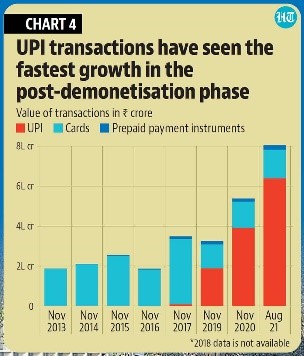
- Digital transactions: These, including UPI, have also touched an all-time high. The value of transactions through the Unified Payments Interface (UPI) crossed $100 billion in October 2021.
- On formalisation of economy: As per data provided by National statistical commission share of informal sector in GDP fell from 52% in 2017-18 to 20% in 2020-2021
- of UPI transactions: Up from just 0.29 million in Nov 2016 to 4.2 billion now. A record high of $103 billion last month.
- Significantly Reduced Counterfeit Notes: The real culprit -- the high-quality counterfeit notes -- almost disappeared post demonetisation, though there were numerous instances of poor fakes or copies being seized by the police. For at least one year post-demonetisation, there was not a single high-quality counterfeit note of ₹2000 detected.
Challenges that still prevail
- Almost all demonetised notes came back to the RBI: In its annual report for the year 2016-17, RBI reported that demonetised banknotes, formally called specified bank notes (or SBNs) under the Specified Bank Notes (Cessation of Liabilities) law, of an estimated value of Rs 15.28 trillion (98.96% of demonetised notes), were received back as on 30 June 2017.
- Failed to Unearth Black Money: While the government did not officially specify the extent of this black money, some senior officials of the government did indicate that this might be of the order of Rs 5 trillion or more.
Sources:
Revival of Asset Reconstruction Companies
In News
A committee formed by the Reserve Bank of India (RBI) recommended various suggestions to revive asset reconstruction companies (ARCs).
Recommendations of the Committee
- Early sale of Bad Debts: It has suggested that banks must aim an early sale of bad debts to ARCs while the regulator must clarify on sales of all categories of loans at the special mentioned account (SMA) stage (less than 91 days’ overdue).
- Direct acquisition: Allow ARCs to acquire assets directly from banks and financial institutions, and from other entities allowed by the RBI by amending the Securitization and Reconstruction of Financial Assets and Enforcement of Security Income Act (SARFAESI ACT) and other related provisions.
- Participate in Insolvency and Bankruptcy Code (IBC) Process: The Committee recommends that ARCs may be allowed to participate in the IBC process.
- Additional vehicle of resources: ARCs should be allowed to sponsor SEBI-registered AIFs (alternative investment firms) with the objective of using these entities as an additional vehicle for facilitating restructuring/recovery of the debt acquired by them.
- Transparency and uniformity: Sale of assets to ARCs must be done through an online platform to bring transparency and uniformity in the process and suggested the use of the infrastructure created by the Secondary Loan Market Association (SLMA).
- Debt aggregation: If 66 per cent of the lenders (by value) agree to sell an asset to ARCs, the same may be binding on the remaining lenders and it must be implemented within 60 days of approval by majority lenders.
- If a lender fails to comply with this requirement, it should be penalized with 100 per cent provisioning on the loan outstanding.
- Larger loans: Banks’ resolution plans for accounts worth Rs 100 crore in default must include a sale to ARCs as an option. If the NPA is more than two years old, and it is not part of the list identified for sale, banks should document the reason.
Observations by the committee on poor performance of ARCs
- Banks and other investors could recover only about 14.29 per cent of the amount they lent in respect of stressed assets sold to ARCs between 2003-04 and 2012-13.
- Banks often sold vintage loans (older loans) to ARCs and this made recovery and reviving business difficult.
- About 80 per cent of the recovery ARCs made came through the deployment of measures of reconstruction that do not necessarily lead to revival of businesses.
- Other things identified are lack of debt aggregation, non-availability of additional funding for stressed borrowers and difficulty in raising of funds by the ARCs on their balance sheet.

Sources:
ISRO's 'Solar Power Calculator'
In News
ISRO would offer a 'Solar Power Calculator' to the world which will use satellite data to measure the solar energy potential of any and every region in the world.
About the News
- ISRO has demonstrated the method of identifying the best suited locations for installing the upcoming solar power generation farms, across the globe.
- This was done using the data obtained from its earth observation satellites that are continuously monitoring the planet, from the Geostationary orbit (36,000 kms above the earth's equator).
About the 'The Solar Power Calculator'
- About: An android App for the computation of solar energy potential has been developed by Space Applications Centre (SAC), ISRO, It is a very useful tool for installation of PV solar panels for tapping solar energy.
- No Hardware used: The data will be collected, analysed, mapped and shared online and via a mobile application and no hardware has been developed for this purpose. This App needs internet connection to calculate the results
- Data Gathering: The mobile app allows users to obtain the 'solar energy potential' data in (kWh/m2) when the location is keyed or designated according to GPS.
- It gives monthly and yearly solar potential processed using Indian Geostationary Satellite data (Kalpana-1, INSAT-3D and INSAT-3DR) and also offers monthly minimum and maximum temperature to calculate realistic solar potential.
- In addition to the monthly/yearly solar potential and minimum/maximum temperature at any location, the app also displays the location on the satellite image and provides azimuth/elevation angles, day length over different time periods in a year etc.
- Obstruction of sunlight due to terrain is also calculated using Digital Elevation Model (DEM) It also suggests optimum tilt angle for solar PV installation.
What will be the Benefits of the Calculator?
- Helps Spot the Location: The Solar Power Calculator would help decide the location of solar energy projects across the globe. It uses satellite data for identifying potential areas where maximum solar energy is available per year.
- Will boost OSOWOG: This would strengthen the 'One Sun, One World, One Grid' initiative. OSOWOG aims to connect energy grids across borders to facilitate a faster transition to the use of renewable energy.
Source:
MGNREGA - Edukemy Current Affairs
In News
According to its own financial statement, the Mahatma Gandhi National Rural Employment Guarantee Act (MGNREGA) scheme shows a negative net balance of ₹8,686 crore.
About the News
- MGNREGA has run out of funds halfway through the financial year, and supplementary budgetary allocations will not come to the rescue for at least another month.
- This means that payments for MGNREGA workers as well as material costs will be delayed, unless States dip into their own funds.
- During the COVID-19 lockdown, the scheme was given its highest budget of ₹11 lakh crore and provided a critical lifeline for a record 11 crore workers.
- However, the scheme’s 2021-22 budget was set at just ₹73,000 crore. As on October 29, the total expenditure including payments due had already reached ₹79,810 crore, pushing the scheme into the red. Already, 21 States show a negative net balance, with Andhra Pradesh, Tamil Nadu and West Bengal faring the worst.

What is MGNREGA?
- The MGNREGA is a demand driven scheme, guaranteeing 100 days of unskilled work to any adult rural household that wants it.
- This scheme was introduced with the aim of improving the purchasing power of semi- or un-skilled rural people of India, irrespective of whether or not they fell below the poverty line.
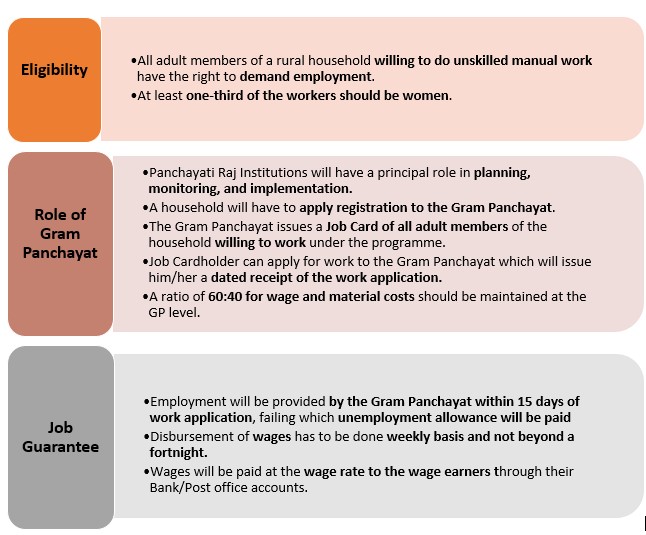
But, MGNREGA has been facing many challenges
- Inadequate Allocation and repeated payment delays: The total budget allocation for MGNREGA this year was 34% less than the revised budget of the last financial year (2020-21). All the labour wages are to be paid by the central government.
- The demand for MGNREGA jobs is down 25% from last year. Also, the ridiculously low wage rates have resulted in lack of interest among workers.
- Digital Divide: Payment delays on the one hand come from the migration to an electronic fund flow system, the National Electronic Fund Management System (NeFMS), which pays wages directly into the workers’ accounts.
- Mapping workers’ Aadhar numbers to the wrong bank accounts, technical problems with servers and connectivity are just a few examples of problems discovered in various studies.
- Workers penalised for administrative lapses: The central ministry withholds wage payments for workers of states that do not meet administrative requirements within the stipulated time period.
- The banking puzzle: The rural banks are highly de-capacitated in terms of staff and infrastructure. The workers normally have to visit the banks more than once to withdraw their wages. Due to great rush and poor infrastructure, the bank passbooks are not updated in many cases. Often, the workers do not get their wages during times of need.
- Excessive centralisation weakening local governance: A real-time MIS-based implementation and a centralised payment system has further left the representatives of the PRIs with literally no role in implementation, monitoring and grievance redress of MGNREGA schemes.
Yet, there are compelling reasons why it should today be regarded as a crucial policy instrument.
- The Rationale for MGNREGA: Workfare is a crucial part of comprehensive social protection that serves as a safety net for those who are most vulnerable. MGNREGA’s performance is possibly the most important proxy for the health of the informal economy, which accounts for anywhere between 80% to 90% of all employment in India.
- MGNREGA as Social Protection: A self-targeted programme like NREGA that puts money in the hands of workers who will almost definitely spend all of it is quite different: in addition to immediate improvement of lives and better bargaining conditions for rural workers, it can have very strong positive multiplier effects that generate a wider expansion of the economy.
- Reach, Benefit, Empower: If one focuses on reach, MGNREGA has done creditably in including those that need it most. It has been pro-poor in the sense that those households with a lower per capita monthly expenditure have disproportionately higher rates of participation.
- Dalits and adivasi participation in MGNREGA has been consistently high since the inception of the programme. As for women, accounting consistently for around 52% on average, MGNREGA has been called a women’s programme. Several states have used MGNREGA to provide work for the differently abled and the elderly.
- Transparency: Programme website provide real time data on a large number of parameters associated with implementation. Assets created have since been geo-tagged with before- after pictures and so on. Perhaps uniquely, the programme built in provisions for twice a year social audits, where people audit the programme.
- Effective work: There is evidence suggesting a rejuvenation of agriculture through increased cropping intensity, area expansion, and the growing of more commercial crops.
- The MGNREGA assets have contributed to building resilience and reducing farmer vulnerability as well and in the management of natural disasters
- Boost to Economy during Crisis: The scheme provided momentum to the economy during Covid-19. Besides addressing the problem of migration from villages, the scheme has helped provide employment to migrant labourers dislocated this fiscal year due to the Covid-19 pandemic.
- Reduced Distress Migration: MGNREGA has reduced the seasonal migration of workers. According to the government, a direct and positive impact of MGNREGA in the reduction of distress migration by providing work closer to home with decent working conditions.
What can be done to make MGNREGA more effective?
- Effective Payment mechanism: The payment mechanism for MGNREGA workers need to be made efficient and inclusive. The exclusion error due to absence of Aashar linkage or DBT-targets need to be urgently looked into.
- The government has recently decided to scrap the system of caste-based wage payments in the MGNREGA scheme. The caste-based wage payments go against the universal nature of the programme and caste-based tensions at work sites.
- MGNREGA for Urban Poor: it will be pertinent here to take a "look at India's urban poverty since there has been a strong trend among the rural poor to migrate to the cities looking for livelihood".
- Supervision of Work and Assets: A more effective step would be to improve technical support and supervision for all MGNREGA works, irrespective of the material-labour ratio. This would also be a good opportunity to enhance the skill-building role of the MGNREGA.
Conclusion: To be clear, MGNREGA cannot substitute deeper and systemic efforts to generate jobs; nor can it address structural weaknesses in the economy. At the same time, the Government’s reluctance to view MGNREGA as an opportunity and explicitly include it in a broad-based strategy to tackle the current economic crisis and of climate-induced distress is puzzling, especially in the face of broad-based evidence on its effectiveness. The need of the hour is for the Government to place MGNREGA at the heart of its strategy to tackle this economic emergency. The Economic Survey of 2019-20 suggested that MGNREGA offers an early warning signal to detect rural distress. It is time the Government started treating it as an instrument to alleviate the consequences of rural distress. We can help by changing the narrative that has for too long maligned MGNREGA.
Question: Discuss why MGNREGA remains relevant despite the various challenges it faces.
Sources:
This Day in History - Demonetization
On November 8, 2016, India announced demonetization. As per the announcement, all Rs 500, Rs 1,000 high value notes became invalid by midnight. There were three main economic objectives of demonetisation—fighting black money, fake notes and creating a cashless economy by pushing digital transactions. Demonetisation is an act of cancelling the legal tender status of a currency unit in circulation. Anticipating positive changes on the liquidity structure as a whole, nations often adopt Demonetisation policy as a measure to counterbalance the current economic condition. Countries across the globe have used Demonetisation at some or the other point to control situations such as inflation and to boost economy.
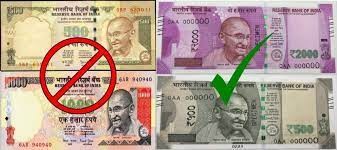
Sources:
Image of the Day - Balloons to capture carbon
This is image of balloons to capture carbon. An Israeli startup has joined the fight against global warming by seeking inspiration in the upper atmosphere, where it hopes to send fleets of balloons that will trap carbon dioxide for recycling. Carbon dioxide emissions, from the burning of fossil fuels and from industrial agriculture, are the main cause of climate change. But removing CO2 from the atmosphere at standard temperatures requires too much energy for governments and companies to consider it cost-effective. The frozen carbon then falls back to Earth where it can be recycled for industrial use. The company has tested its system on a small scale releasing gas-filled balloons with a box that serves as a carbon-capture device attached underneath. The company aims to build larger balloons within two years that could each be deployed to remove a tonne of carbon a day at a cost below $100, much less than comparable on-ground facilities currently in use.
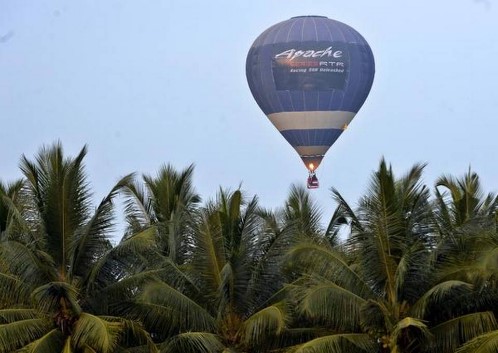
Source:
“Delhi Bazaar” Portal
- Context: The Delhi government has announced the “Delhi Bazaar” portal recently to promote local products all over the world.
- It will be a platform that will have all the services and products available in the national capital at one place.
- The web portal enables registered businessmen, traders, manufacturers, markets and shops to display their products and sell them not only domestically, but also abroad.
- It will also have virtual markets and exhibitions where people can go through shops, identify products of their choice and buy them.
- It enables small and big businesses to attract more customers worldwide and earn profits which will boost Delhi's revenue, GDP, economy and generate employment in a big way.
- It is an opportunity for start-ups and entrepreneurs to bring their products and service to a larger audience.

Source:
- 'Delhi Bazaar': Kejriwal announces portal to promote products all over the world
- CM Arvind Kejriwal Announces ‘Delhi Bazaar’ Online Portal for Delhi Businessmen
Image Source:
ISRO ‘data window’
- Context: ISRO has been planning to create a special “data window” for small island nations.
- The special data window for SIDS (Small Island Developing States) will generate and disseminate satellite data continuously to help these countries strengthen their fences against climate disasters and to monitor cyclones, coral reefs, and coastlines.
- This will be part of the new India-backed international initiative (Infrastructure for Resilient Island States) IRIS.
- IRIS is the first major programme under the Coalition of Disaster Resilience Infrastructure (CDRI) which is an international partnership launched by India two years ago to safeguard important infrastructure against the increasing frequency of climate disasters.
- Besides strengthening the infrastructure, it will also help the countries in accessing technology and finance from the developed world, because of the priority given to these infrastructure projects in the finance pipeline.
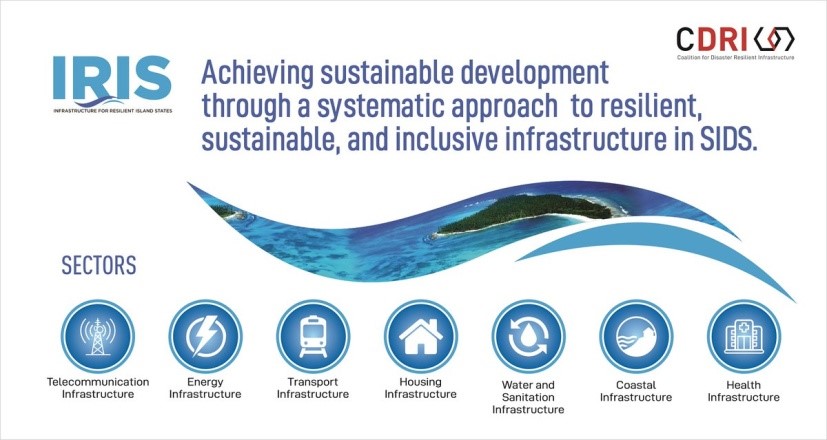
Source:
- ISRO ‘data window’ in India-led plan to boost infra in island nations
- India to Build Special Data Window for Information on Cyclones: PM Modi
Image Source:
Vanniyar Community
- Context: The Madras High Court has recently quashed the 5% reservation provided to Vanniyars.
- The exclusive quota for one community was criticised on the ground that it was done with an eye on the Assembly election.
- The other ground was that the separate reservation for one caste amounted to discrimination against all the other castes in the same MBC category.
- The Vanniyar are the Most Backward Community (MBC) found in the northern part of Tamil Nadu.
- The community, constituting a significant percentage in the State’s northern districts, consists predominantly of agricultural labourers..
- They are one of the largest and most consolidated backward communities that had a consistency in retaining political representation from 1940s and 1950s in Tamil Nadu.
- They had raised massive protests in the mid-1980s demanding 20% reservation in the state, and 2% in central services.
- Their movement was backed by the Justice Party as well as the Self-Respect Movement.
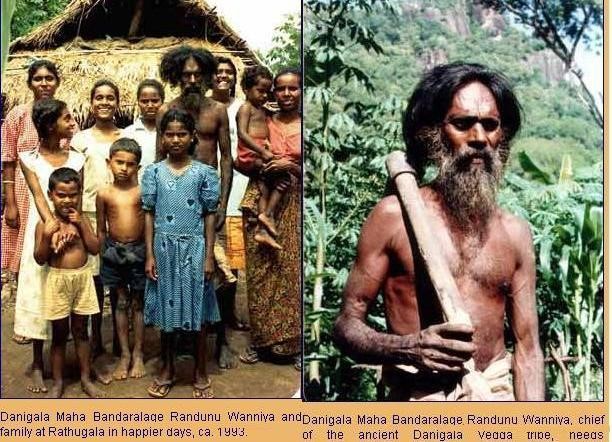
Source:
- Explained: Who are the Vanniyars, and why did Madras HC quash TN govt’s quota to them?
- Explained: The relevance of the Vanniyar movement in Tamil Nadu today
Image Source:
'Good' mosquitoes to combat dengue
- Context: Researchers in Indonesia are breeding 'Good' mosquitoes to fight disease-bearing mosquitoes.
- Here the mosquitoes carrying dengue is made to mate with mosquitoes carrying Wolbachia, which will produce Wolbachia mosquitoes- the 'good' mosquitoes.
- Wolbachia is a common bacteria that occurs naturally in 60% of insect species, including some mosquitoes, fruit flies, moths, dragonflies and butterflies.
- However, it is not found in dengue-carrying Aedes aegypti mosquitoes and hence the mating.
- It has been found that deploying mosquitoes with Wolbachia reduced dengue cases by as much as 77% and hospitalizations by up to 86%.
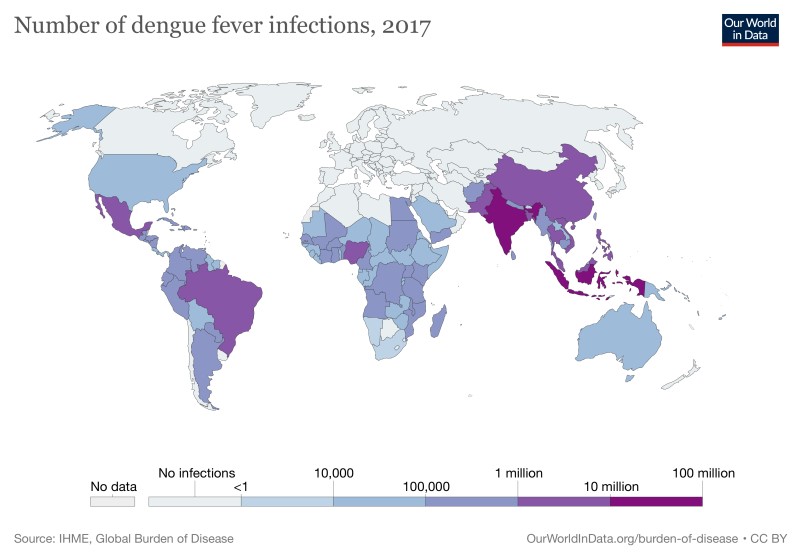
Source:
Strengthening vaccine trust: TH
Essence: According to recent studies, India's acceptance of the COVID-19 vaccination is among the greatest in the world. However, vaccination misinformation, in particular, can erode vaccine faith, and even small pockets of unvaccinated people might jeopardise an immunisation campaign's success. As a result, we now need to boost vaccine confidence to prevent serious outcomes of COVID infection. This can be accomplished by presenting evidence from reliable sources, framing vaccination as the default normative behaviour, and enlisting the support of messengers such as sarpanches, health workers, actors, and others. To boost vaccination confidence, India requires an effective multidisciplinary response to any health emergency, with creatives and public health professionals working closely together. Normalcy isn't just about surviving; it's also about living fearlessly, bringing joy into our lives, and caring for others. As a result, vaccination, as well as face masks and social separation, are critical for resuming normalcy.
Why should you read this article?
- To comprehend the importance of immunisation in preventing severe COVID-19 infection outcomes.
- To learn about the causes of vaccine apprehension and how to address them.
- To understand the role of trust in vaccine acceptance and coverage
Source:
Threat and Perceptions in the Himalayas: ORF
Essence: The article talks about China-Bhutan relations and implications on India. The MoU between China and Bhutan on resolving border disputes has thrown Chinese media into a frenzy because of their misunderstanding of the step as diplomatic disaster for India.
They seem to forget the fact that it was the common perception of Chinese threat and intentions that drew Bhutan closer to India, and China has done little to address this Bhutanese concern. Economically also, credibility of China and its investments have continued to hit rock-bottom with the former’s assertiveness and debt-trap diplomacy.
Having said this, India must be careful because China’s increasing presence in the neighborhood has implications for regional security and India’s prestige.
Why should you read this?
- To understand the history of China-Bhutan relations
- To understand drivers of Bhutan’s foreign policy with China and its implications for India.
- To appreciate challenges faced by India in neighborhood because of increasing Chinese presence.
Source:
A new jurisprudence for political prisoners: TH
Essence: The article talks about the recent judgment by the Supreme Court on UAPA. According to the editorial, the Unlawful Activities (Prevention) Act (UAPA) is misused as under the act, jail is the rule and bail is often not even an exception as it permits keeping a person in prison for up to 180 days, without even filing a charge sheet and holds presumption of guilt of the accused, instead of presumption of innocence. The courts usually adopt two mutually contradictory methods in dealing with such tough provisions. One is to read and apply the provision literally thereby curtailing the individual freedom. Constitutional reading of the statute is a contrasting approach, which perceives the issues in a human rights angle. The former approach is reflected in Zahoor Ahmad Shah Watali case, and Supreme Court said that the burden of proof is on the accused. But in the recent Thwaha Fasal case, Supreme Court followed the later approach and while granting bail to the accused said that mere association with a terrorist organisation or possession of documents or even fascination for an ideology is not sufficient to attract the offences alleged under the UAPA. The editorial says that the Thwaha Fasal case judgment should be invoked to release other prisoners in the country held under UAPA.
Why you should read this article?
- To know about various provisions of the Unlawful Activities (Prevention) Act (UAPA).
- To understand the background behind the Thwaha Fasal vs Union of India case.
- To know about the two mutually contradictory methods adopted by Supreme Court to deal with tough provisions and their application in Zahoor Ahmad Shah Watali and Thwaha Fasal cases.
Source:
Waste to Wonder
Background
- When the entire North India starts complaining about the stubble burning issue, some of the environmentalist found ways to tackle this.
- Straw, one of the major residues from the harvesting is the main component of stubble is reused as bedding for the Delhi Zoo
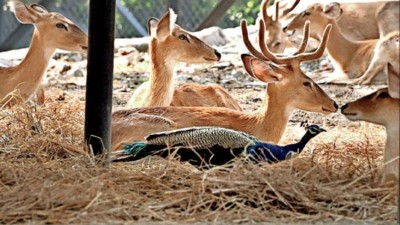
How is straw being utilised?
- Straws are been procured from the neighbouring States during winters for multiple use.
- Animals like brow antlered deer use them as bedding material as they provide warmth
- While reptiles use it for hibernation as they need to be protected from other animals during this state.
- If utilised properly, this straw can be of great use, hence burning them off cannot be the only solution.
Quote:
“The greatest threat to our planet is the belief that someone else will save it.”
– Robert Swan
Source:
Share the article
Get Latest Updates on Offers, Event dates, and free Mentorship sessions.

Get in touch with our Expert Academic Counsellors 👋
FAQs
UPSC Daily Current Affairs focuses on learning current events on a daily basis. An aspirant needs to study regular and updated information about current events, news, and relevant topics that are important for UPSC aspirants. It covers national and international affairs, government policies, socio-economic issues, science and technology advancements, and more.
UPSC Daily Current Affairs provides aspirants with a concise and comprehensive overview of the latest happenings and developments across various fields. It helps aspirants stay updated with current affairs and provides them with valuable insights and analysis, which are essential for answering questions in the UPSC examinations. It enhances their knowledge, analytical skills, and ability to connect current affairs with the UPSC syllabus.
UPSC Daily Current Affairs covers a wide range of topics, including politics, economics, science and technology, environment, social issues, governance, international relations, and more. It offers news summaries, in-depth analyses, editorials, opinion pieces, and relevant study materials. It also provides practice questions and quizzes to help aspirants test their understanding of current affairs.
Edukemy's UPSC Daily Current Affairs can be accessed through:
- UPSC Daily Current Affairs can be accessed through Current Affairs tab at the top of the Main Page of Edukemy.
- Edukemy Mobile app: The Daily Current Affairs can also be access through Edukemy Mobile App.
- Social media: Follow Edukemy’s official social media accounts or pages that provide UPSC Daily Current Affairs updates, including Facebook, Twitter, or Telegram channels.

